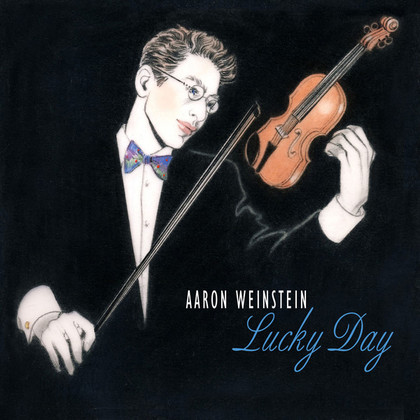« Interview with Jamey Aebersold |
Main
| The esoteric Minor Scale »
 January 16, 2014 | Aaron Weinstein on chord melody January 16, 2014 | Aaron Weinstein on chord melody
From our February 2011 Mandolin Cafe interview, "10 Questions with Aaron Weinstein"
Ted Eschliman: We are all fascinated by the finesse and flourish of your chord melody arrangements. How do you approach these, as melody with chords, or the harmonic structure first and working the melody into those chords
Aaron Weinstein: It helps me to think of chord-melody in terms of the melody and accompaniment being two independent entities instead of the chord and the melody always being one big block voicing. There's all sorts of things you can do to add interest in the way you break up the chords or re-harmonize or work in some kind of moving bass line. There's really an endless stream of possibilities and everyone thinks differently so I'm always curious to see how other mandolinists go about this. I wish there were more folks doing it. But my approach to chord melody isn't new at all! Guitarists have been playing this way for decades. I'm just trying to catch up!
Ted Eschliman: As a follow-up to the previous question, with the mandolin being mostly a soprano instrument, how do you approach communicating the bass notes of the chord make-up in your chord melody arranging?
Aaron Weinstein: I don't think the range matters if you treat the notes appropriately. Just look at the master, J.S. Bach and the way he wrote for solo violin. It's completely self-contained. That's the gold standard.
The former child prodigy and first call New York swing fiddler brings up a crucial point in the best way to attack chord/melody. Many think in terms of voicing inversions of the chord that keep the melody constantly in the top voice. Block chord, block chord, block chord, etc.
Super if you are capable, especially in the context of ensemble when you have texture and rhythmic variation to spice up the arrangement. If it's just solo mandolin, this can get tedious after while. We like Aaron's approach in that you are thinking two things at once, integrating a specific harmonic accompaniment underneath the melody. It's far more interesting.
If you want to attempt this, take a lead sheet with melody and chords, master the melody, master the chords and THEN try to combine. If you're chord inversions aren't interesting, the arrangement won't be.
Listen to some terrific examples from Aaron:
Aaron Weinstein mandolin:  I Must Be Dreaming I Must Be Dreaming
Aaron Weinstein mandolin:  That Warm Feeling That Warm Feeling
Purchase Aaron's recent CD: "Lucky Day" Amazon | iTunes

Posted by Ted at January 16, 2014 8:38 AM

Disclaimer: In the 'Information Age' of the 21st Century,
any fool with a computer, a modem, and an idea can
become a self-professed 'expert." This site does not
come equipped with 'discernment.'
|



